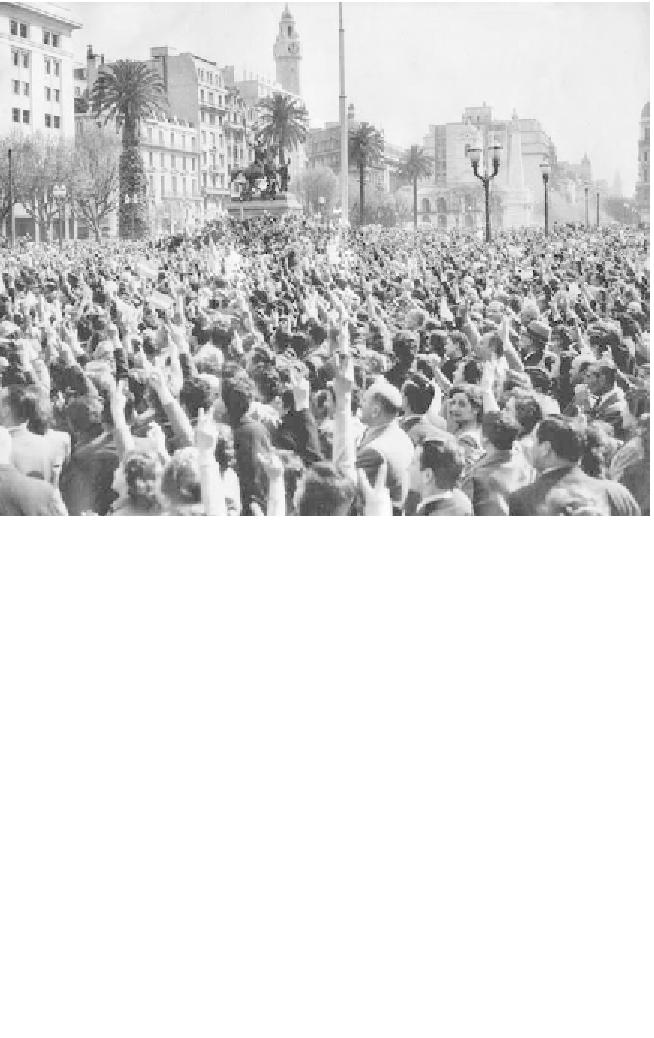Travel Reference
In-Depth Information
Demonstrators in the Plaza de Mayo supporting the seizure of power by General Lonardi in
what they called the “Liberating Revolution”
(Archivo General de la Nación)
His opponents had branded Perón as fascist and autocratic. It is true
that he revised the constitution to permit his reelection and jailed peo-
ple without charges, one of whom was Victoria Ocampo, one of Latin
Americas' greatest women of letters. Perón also attempted to manipu-
late public opinion, expropriated anti-Peronist news media, indulged
in demagogic rhetoric, passed a woman's suffrage law in an effort to
double his electoral majority, and used the police to repress strikes and
control middle-class protests. But Perón's brand of populism did not
confiscate the property of the oligarchs. He did not defraud the elec-
torate. He did not socialize the means of production, and he did not
murder sizable numbers of his opponents.
It is ironic that the dominant modernization theory of the time
equated industrialization and growth of the educated middle class
with the development of democracy. If the theory had been accurate,
Argentina would have enjoyed the most democratic government
in South America. Instead, massive civil disobedience on the part




